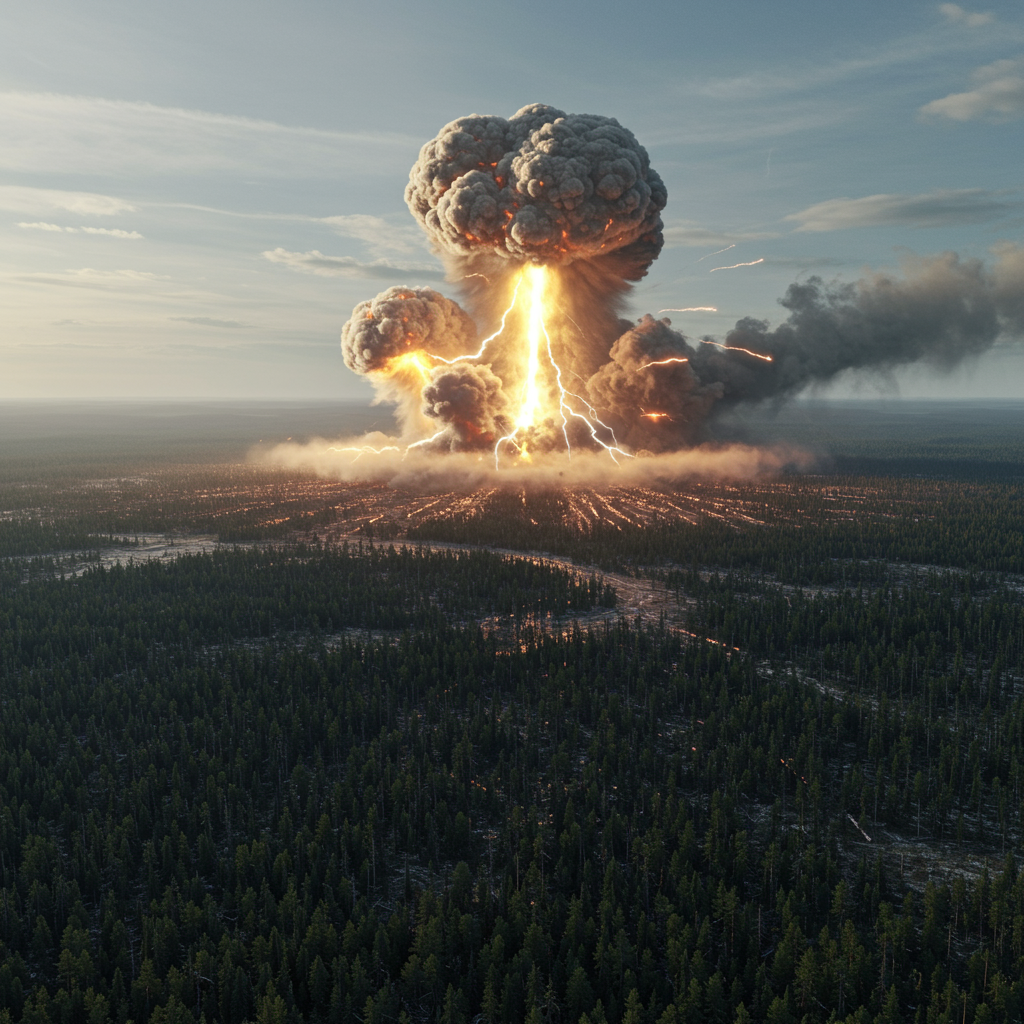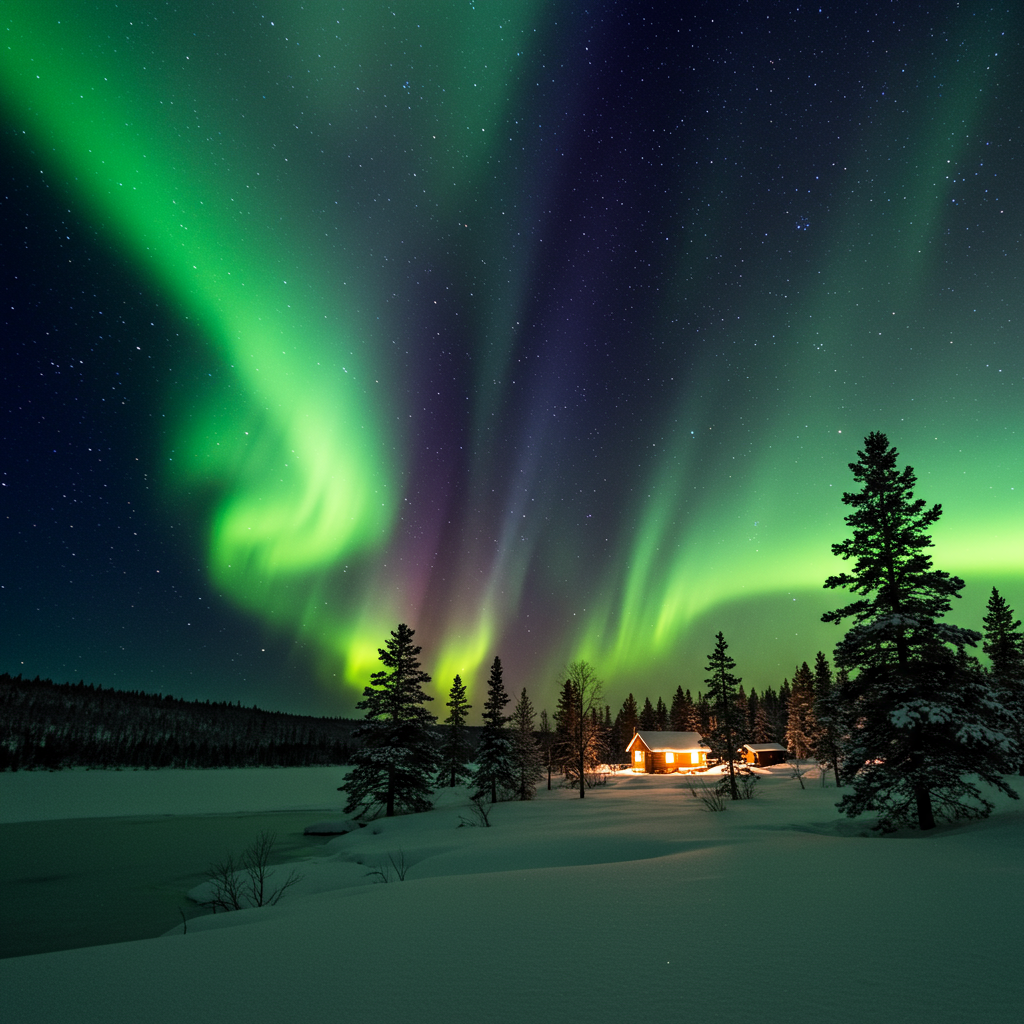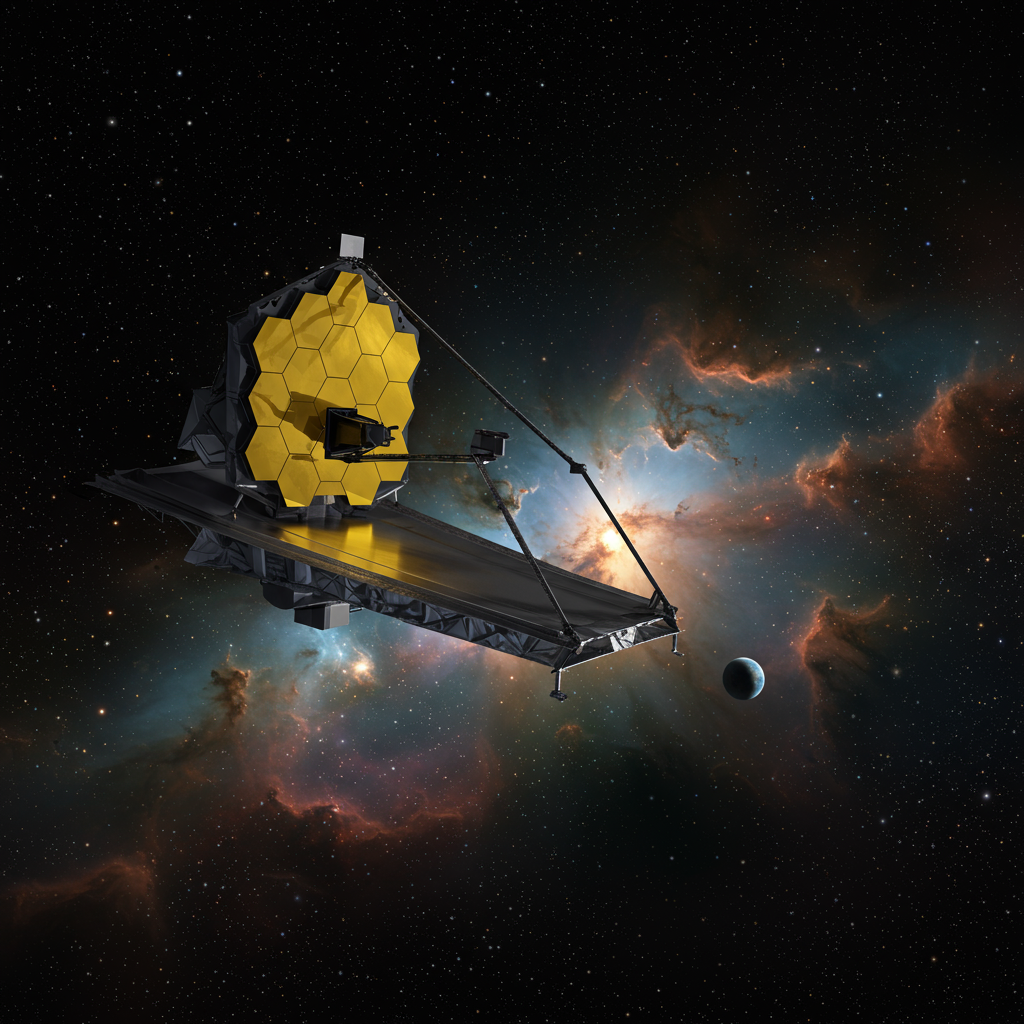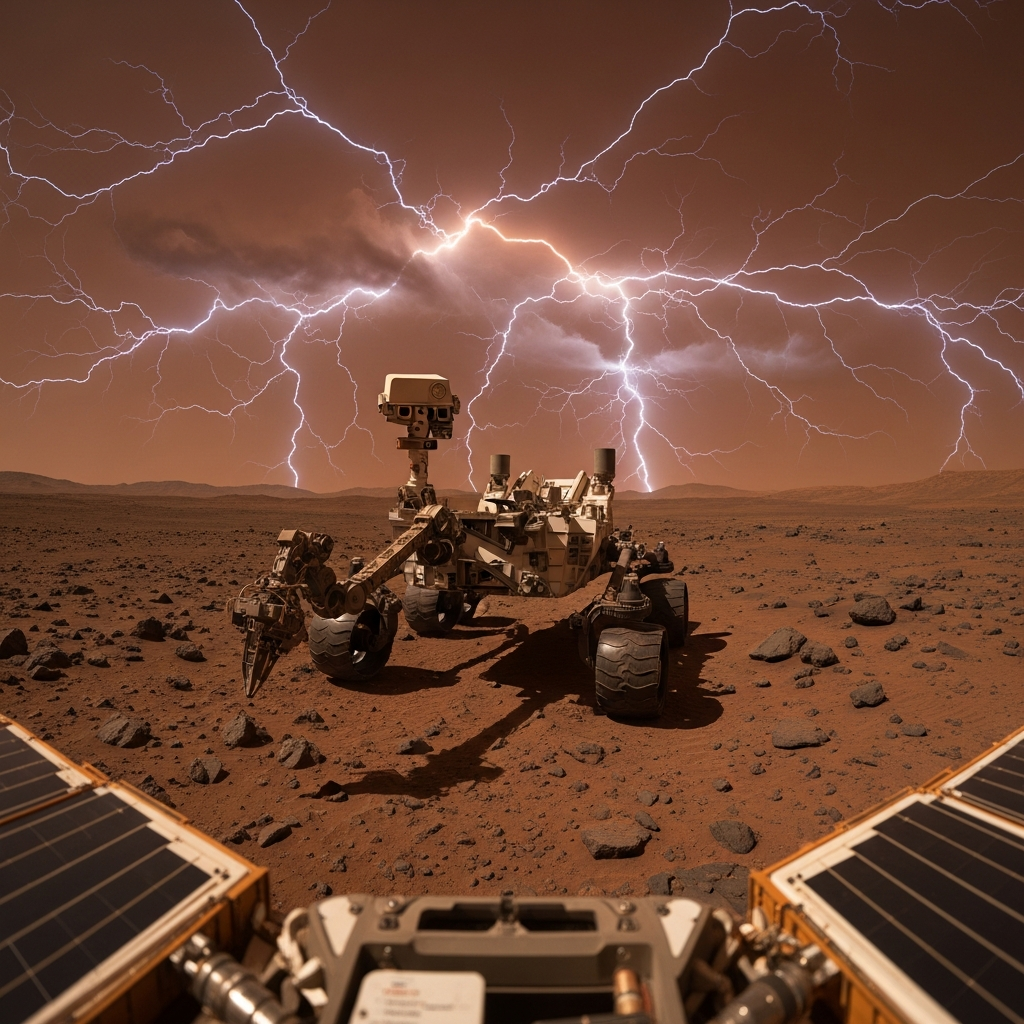Imagine a colossal explosion ripping through the sky, flattening trees across vast distances, yet leaving no crater behind. This isn’t science fiction; it’s the reality of the tunguska event. On the morning of June 30, 1908, a remote area of Siberia was rocked by what remains the largest cosmic impact event witnessed by modern humans. This enigmatic blast continues to fascinate scientists and the public alike, shaping our understanding of potential threats from space.
More than a century later, the site near the Podkamennaya Tunguska River still holds clues to this powerful airburst. While the forest has largely recovered, the pattern of devastation observed by early explorers tells a clear story. Understanding the Tunguska Event is crucial for grasping Earth’s vulnerability to near-Earth objects and the importance of modern planetary defense efforts.
The Mysterious Siberian Skyfire of 1908
The Tunguska Event occurred at approximately 7:17 AM local time. Eyewitnesses, though few in the sparsely populated region, reported seeing a brilliant, bluish fireball streaking across the sky. This celestial display was followed by intense heat, a blinding flash, and sounds described like artillery fire. A massive shockwave emanated from the blast point, strong enough to be felt hundreds of miles away.
Reports indicate the shockwave knocked people off their feet and shattered windows even at considerable distances. The immediate aftermath revealed widespread destruction on the ground. An estimated 80 million trees were flattened across an area spanning approximately 830 square miles (2,150 square km). This massive radial pattern of downed trees pointed outward from a central point above the surface.
Scientists estimate the object entering the atmosphere was between 50 and 100 meters (150-300 feet) across. Some analyses suggest it could have been a rocky asteroid about the size of a 25-story building. The incredible energy released by the airburst has been estimated variously between 4 and 15 megatons of TNT. To put that in perspective, even the lower estimate is about 250 times more powerful than the atomic bomb dropped on Hiroshima.
Why No Crater? The Airburst Hypothesis
The most perplexing aspect of the Tunguska Event has always been the absence of a traditional impact crater. Most large cosmic objects hitting Earth leave a significant bowl-shaped depression in the ground. The lack of such a feature at Tunguska fueled early speculation and theories, some quite outlandish, ranging from mini-black holes to alien spacecraft.
The prevailing scientific consensus points to an airburst explosion as the reason for the missing crater. Rather than reaching the surface, the object is believed to have exploded high in the atmosphere. Estimates place the detonation altitude between 6 and 10 kilometers (4 to 6 miles) above the Siberian ground. This atmospheric detonation caused the vast majority of the incoming bolide to vaporize.
Disintegrating and vaporizing before impact means the energy was dispersed high above the surface. This created a powerful downward pressure wave capable of flattening trees and scorching the landscape. However, it wasn’t a concentrated impact sufficient to excavate a large crater. The intense heat pulse likely also contributed to the scorching observed.
Early Investigations and Enduring Evidence
Investigating the Tunguska site was challenging due to its extreme remoteness. The first significant scientific expedition, led by Russian mineralogist Leonid Kulik, didn’t reach the area until 1927. This was nearly two decades after the event occurred. Kulik documented the vast area of flattened trees.
Kulik’s expeditions in the 1920s and 1930s produced crucial early documentation. His team took photos and conducted aerial surveys. These clearly showed the striking radial pattern of the felled trees. This pattern strongly suggested a blast originating from a point in the air, consistent with the airburst theory. Despite extensive searching, Kulik found no large meteorite fragments or a distinct impact crater.
Subsequent decades of research have refined the understanding of the blast zone. It is often described as having a distinctive butterfly shape. Teams have sought other forms of evidence. This includes analyzing rock fragments, searching for shocked quartz (minerals altered by extreme pressure), and studying irregularities in tree rings which can record stress from the blast.
The possibility that nearby Lake Cheko formed as a result of a falling bolide fragment has been debated. Some researchers proposed this idea based on its unusual shape and depth. However, other research teams dispute this, arguing its features are consistent with natural geological processes. Direct physical evidence of the object itself remains elusive, keeping the event a topic of ongoing scientific study.
Geochemical analysis of samples from the area has offered further clues. Soil and tree resin samples have shown slightly elevated levels of elements like nickel and iridium. These elements are commonly found in extraterrestrial objects. This evidence reinforces the conclusion that a cosmic body was indeed responsible for the Tunguska event.
A Novel Hypothesis: The Grazing Iron Meteor
While the airburst theory is widely accepted, the persistent mystery of minimal object remnants has led to alternative ideas. A more recent hypothesis proposes a unique scenario. This theory suggests the Tunguska event was caused by a large iron meteor, perhaps 100 to 200 meters in diameter. This iron object didn’t explode or hit the ground directly.
Instead, this hypothesis posits the iron meteor entered Earth’s atmosphere at a very shallow angle, estimated between 9 and 12 degrees. It “grazed” through the atmosphere at an altitude of 10 to 15 km. Computer models suggest rocky or icy objects of this size would disintegrate, but a large iron body could survive intact. This grazing path would generate a powerful shock wave responsible for the damage.
The key part of this theory is that the meteor then curved away and exited Earth’s atmosphere. This would explain the lack of large debris or a crater. The high speed would cause shed mass to turn into gas and plasma, dispersing widely. Critics argue that a shock wave from a skimming object might not be powerful enough to cause the observed damage. They also point out that the radial tree pattern and eyewitness accounts better fit an explosion model. This debate highlights the dynamic nature of scientific inquiry.
Tunguska’s Lasting Impact: Planetary Defense
The Tunguska Event serves as a stark reminder of Earth’s vulnerability to cosmic impacts. It highlighted the potential threat posed by Near-Earth Objects (NEOs). These are comets or asteroids with orbits that bring them within 1.3 astronomical units of the Sun. Studying Tunguska remains critical for understanding how large objects behave when encountering our atmosphere.
The event has significantly influenced modern efforts in planetary defense. Scientists and governments are increasingly focused on detecting, tracking, and potentially mitigating threats from NEOs. NASA established a Planetary Defense Coordination Office (PDCO) in 2016 to find and track potentially hazardous objects.
The number of known NEOs has grown rapidly. By June 2025, NASA’s database contained over 38,000 entries. Powerful new observatories like the Vera C. Rubin Observatory are accelerating discoveries. It found over 2,100 new asteroids, including seven NEOs, in just a few days recently. While the vast majority are harmless, continuous monitoring is essential.
The 2013 Chelyabinsk meteor event in Russia provided valuable modern data on atmospheric airbursts. This smaller event, while causing widespread damage (broken windows, injuries), did not flatten forests like Tunguska. However, it was well-documented with modern technology. Researchers used this data and computer modeling to refine our understanding of how cosmic objects break up in the atmosphere. Chelyabinsk served as a real-world template for modeling the Tunguska explosion.
Proactive defense strategies are also being developed. The successful DART mission in 2022 demonstrated the feasibility of altering an asteroid’s trajectory using kinetic impact. This provides a potential method for deflecting objects on a collision course. Future missions like ESA’s Hera will further study such deflection techniques. The Tunguska mystery continues to motivate these global collaborations to protect Earth from future cosmic encounters.
Frequently Asked Questions
What was the Tunguska Event?
The Tunguska Event was a massive explosion that occurred over a remote forest in Siberia, Russia, on June 30, 1908. It is believed to have been caused by a large cosmic object entering Earth’s atmosphere. The resulting airburst flattened trees across thousands of square kilometers, generated intense heat and shockwaves, and was felt hundreds of miles away.
Why didn’t the Tunguska Event leave a crater?
Unlike many impact events, the Tunguska Event did not leave a traditional impact crater because the object likely exploded high in the atmosphere. Scientists estimate the airburst occurred between 6 and 10 kilometers (4-6 miles) above the ground. This atmospheric detonation caused the object to vaporize, dispersing its energy as a shockwave and heat pulse rather than concentrating it in a ground impact.
How did the Tunguska Event influence modern planetary defense?
The Tunguska Event highlighted Earth’s vulnerability to sudden, powerful cosmic impacts and spurred scientific interest in Near-Earth Objects (NEOs). It demonstrated that even objects exploding in the atmosphere can cause massive destruction. This event helped drive the development of modern planetary defense efforts, including programs like NASA’s PDCO to detect and track NEOs and missions like DART to test asteroid deflection technologies.
Conclusion
The Tunguska Event remains a compelling scientific puzzle more than a century later. While the leading theory points to a powerful airburst from a stony asteroid, alternative ideas like the grazing iron meteor hypothesis continue to spark debate. What is undeniable is the sheer scale of destruction caused by this atmospheric explosion. This cosmic encounter served as an early, dramatic warning of the potential threats posed by objects in space. The ongoing study of Tunguska, combined with lessons learned from more recent events like Chelyabinsk, continues to inform and motivate global efforts in planetary defense, ensuring we are better prepared for future encounters with near-Earth objects.




